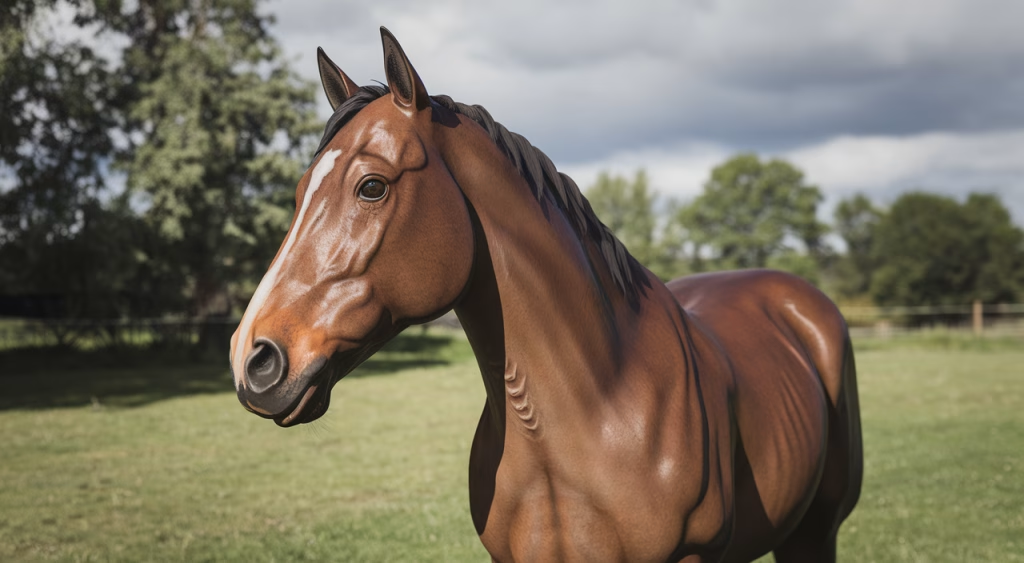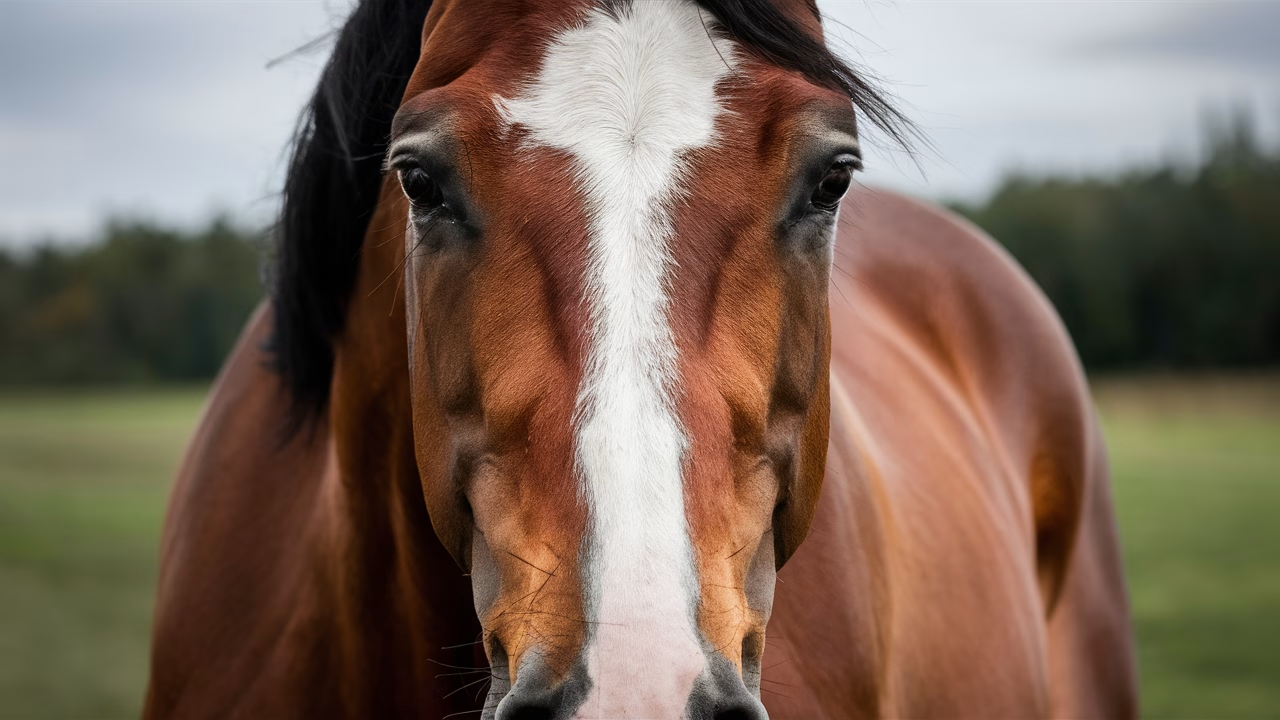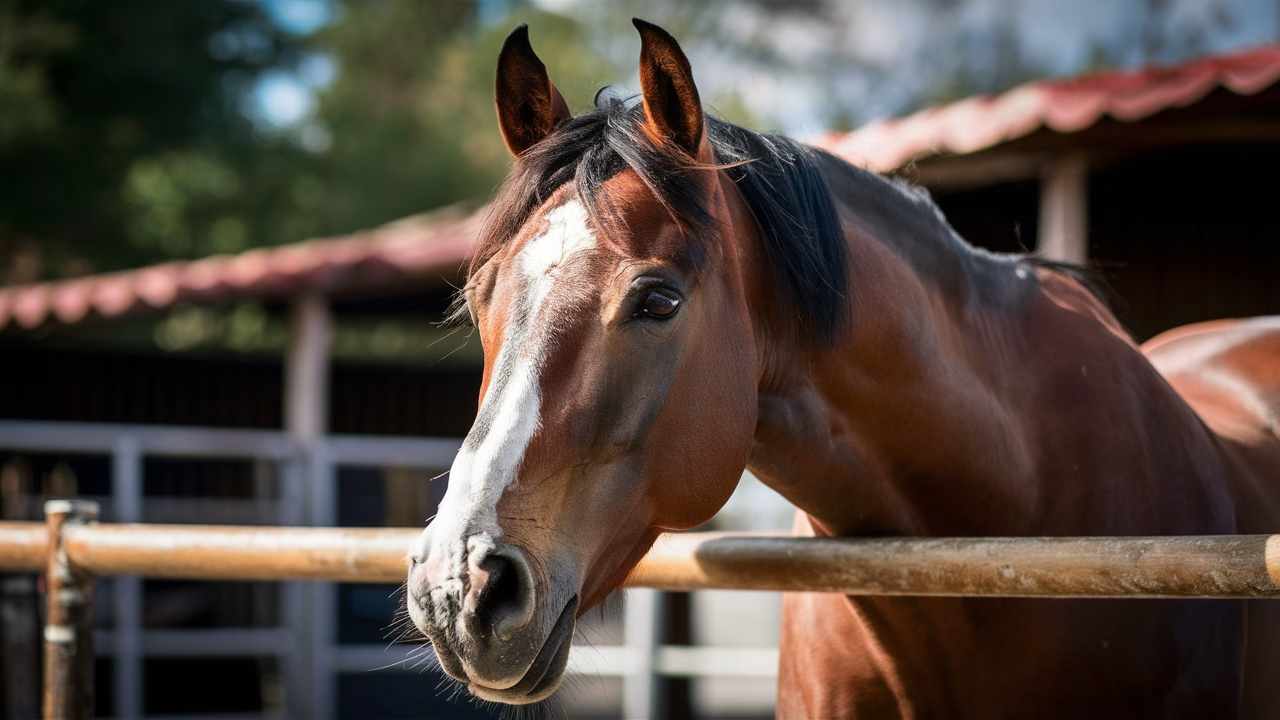How many facial expressions can horses really make?
Scientific studies have shown that horses can produce 17 unique facial expressions—surprisingly close to the number expressed by humans and dogs. These horse facial expressions reflect a wide range of equine emotions, from curiosity and fear to relaxation and pain.
TL;DR: How to Read Horse Facial Expressions
- Horses have 17 distinct expressions, including ear tilts, nostril flares, and eye shape changes.
- Expressions reflect emotions like fear, contentment, pain, curiosity, or frustration.
- Reading facial cues alongside body language gives a richer understanding of horse behavior.
- Real-world context is key: one twitch can differ between “annoyed” and “alert.”
- Applications include better welfare, safer handling, and deeper owner-horse bonds.
Why Do Horse Facial Expressions Matter?
Ever watched a horse wrinkle its nose, roll an eye slightly, or shift an ear—and wondered what that meant? Horses, despite their stoic repute, are incredibly expressive animals. While vocalization plays a minimal role in animal communication, their faces are a rich landscape of emotional signals. Those subtle changes often go unnoticed without training, yet reading horse facial expressions is essential to understanding equine behavior.
As someone who has studied equine behavior both in labs and in stables, I can confidently tell you: your horse is constantly trying to tell you something—with its face. Whether you’re a researcher mapping horse facial expressions for academic study or a horse owner trying to understand why your mare pins her ears when tacking up, decoding these signals can change the way you interact with horses—for the better.
Facial Action Coding in Horses: The Science Behind EquiFACS
What Is EquiFACS?
EquiFACS, or the Equine Facial Action Coding System, is the scientific tool used to identify the muscle movements (called Action Units, or AUs) behind horse facial expressions. It builds upon similar systems used for humans (FACS) and dogs (DogFACS). Developed by animal behavior scientists, EquiFACS has mapped 17 individual expressions based on anatomical and emotional cues in equine behavior.
Examples of Horse Facial Action Units
| Facial Action Unit (AU) | Description | Associated Emotion |
|---|---|---|
| Ear Flick (EAD101) | Both ears turn rapidly backward then return | Alertness, focus |
| Nostril Dilator (AD38) | Nostrils flare wide open | Excitement, pain, distress |
| Inner Brow Raiser (AU101) | Eyebrow area lifted toward the center | Fear, anticipation |
| Eye White Exposed (AD1) | More white of the eye is exposed | Fear, overstimulation |
These AUs may occur on their own or in combination. Just like in human expressions, context matters when reading horse facial expressions. A nostril flare during gentle riding likely means physical exertion, not fear. But flare it in a stall after a sudden noise—and that’s alertness or fear speaking.
Breaking Down the 17 Recognized Horse Facial Expressions
Let’s explore each facial expression, where it’s used, and what it may indicate emotionally. Understanding these horse facial expressions improves animal communication, safety, and emotional recognition in horses.
- Ears pinned back: Aggression, discomfort, inner turmoil.
- Ears turned outward: At ease, low focus, resting.
- Flared nostrils: High arousal—pain, excitement, fear.
- Tight lips and chin: Unhappiness or concentration.
- Pronounced eye whites: Alarm, startle response.
- Inner brow lifted: Feeling unsure or fearful.
- Twitched muzzle: Flehmen response, pain, or frustration.
- Lip curl (Flehmen): Scent investigation, especially reproductive cues.
- Slack lower lip: Deep relaxation, sometimes sleep.
- Tensed jawline: Stress, reluctance.
- Wrinkled nose: Resistance or dislike.
- Chewed mouth without bit: Processing, submission, conflict resolution.
- Yawning (exaggerated jaw open): Stress release or boredom.
- Pre-pain face (grimace): Triangular eye shape, shifted ears, tightened lips.
- Focused eye (slight squint): Thinking, assessing environment.
- Neutral face: Alert calmness, ideal state.
- Rapid blinking: Transition from stress to calm.
How to Read Horse Facial Expressions in Real-Life Contexts
Recognizing these expressions is one thing; interpreting them correctly is another. You’ll need to consider the entire context—including body language, setting, and horse history when learning how to read horse facial expressions.
- Training sessions: Look for nostril movement, lip pressure, and ear direction to spot uncertainty or pain before it escalates into unwanted behavior.
- Grooming time: Slack lips and eyes closed? That’s a happy camper. Twitched skin and pinned ears might mean you’ve found a sore spot.
- Vet visits: Watch nostril changes and eye whites for anxiety or fear that may precede resistance.
- New environments: Darting ears, exposed eye whites, and a tight mouth suggest sensory overload or uncertainty.
In practice, you’ll notice these patterns emerge regularly in equine behavior. One of my vet-colleagues describes a horse’s “I-hate-this syringe” face as involving nostril contraction, triangular eyes, and chin wrinkling—all in a flash. That shows the power of attunement to facial clues in animal communication.
What Do Facial Expressions Say About Equine Emotions?
Tapping Into the Spectrum of Equine Emotions
Horse facial expressions aren’t just physical reflexes—they’re emotional signposts that reveal equine emotions. When combined with posture and behavior, they allow us to understand what the horse is feeling in the moment. This insight is invaluable for improving welfare and training outcomes.
Connecting Emotion to Expression
| Emotion | Facial Expressions | Training Implication |
|---|---|---|
| Curiosity | Ears forward, soft eyes, relaxed nostrils | Ideal time to introduce new cues |
| Fear | Flared nostrils, eye white, ears back | Pause or reassess stimulus |
| Pain | Tight chin, nostril flare, eye triangle | Seek veterinary evaluation |
| Confidence | Neutral face, forward ears | Build on progression |
Understanding equine emotions through horse facial expressions allows us to adapt better. You no longer need to guess if that tail swish was irritation or a fly—let the facial expression guide your interpretation of equine behavior.
Applications in Training, Care, and Safety
Translating horse facial expressions into action can prevent injury, reduce stress, and improve outcomes across disciplines:
- Horse owners: Use facial cues to fine-tune routines and spot problems early.
- Veterinarians: Identify subtle expression shifts indicating pain in stoic breeds.
- Researchers: Compare emotional indicators across situations to develop more humane practices.
- Trainers: Adjust methods based on facial cues of acceptance or resistance.
From a behaviorist’s view, understanding horse facial expressions is the horse’s emotional map—and we’ve only just begun to chart the terrain of animal communication.
Final Thoughts: Deepen Your Connection by Reading the Face
The more fluently we read horse facial expressions, the better companions, caretakers, and professionals we become. These micro-movements aren’t just scientific curiosities—they’re the gateway to real-time insight into equine emotions.
So next time your horse softens their eyes or twitches an ear, pause. Watch. Listen with your eyes. You might just unlock a new level of understanding in how to read horse facial expressions.
Frequently Asked Questions
What is the most common facial expression in relaxed horses?
Relaxed eyes, a slack lower lip, and ears turned gently outward are typical signs of a content, calm horse.
How do I differentiate pain from fear in facial expressions?
Fear usually involves wide eyes showing sclera, rapid blinking, and ear flicks; pain involves chin tightness, subtle squinting, and grimace-like tension of facial muscles.
Can horses fake facial expressions during training?
No, horses don’t ‘fake’ expressions the way some people might. However, learned behaviors (like the Flehmen response) can appear even without strong emotion.
Do all horses use the same facial cues?
The facial muscles are anatomically the same, but context, breed differences, and individual temperament can influence expression intensity and frequency.
What’s the difference between EquiFACS and grimace scales?
EquiFACS maps all facial movements (voluntary and involuntary), while grimace scales focus specifically on pain indicators like ear tension and orbital tightening.
Is it possible to teach children or new handlers to read these expressions?
Absolutely. With visual aids, side-by-side comparisons, and patient observation, even children can begin to interpret equine expressions accurately.
What should I do if I notice unusual expressions often?
Schedule a veterinary check-up. Unusual or repetitive facial expressions can signal underlying pain or stress conditions.





